Winter birdwatching in the Skagit Valley and neighboring Whatcom County offers some of the finest wildlife viewing in Washington State. Positioned along the Pacific Flyway, the region’s wetlands, ample shoreline, and fertile farmland welcome migratory bird species during the colder months.
From swirling flocks of snow geese to bald eagles hunting for salmon along the Skagit River, winter wildfire viewing opportunities are plentiful. The sheer number and variety of bird species offers something for both budding and seasoned bird watchers alike.
At a Glance: Winter Birding in Northwest Washington
- Peak Season: November to mid-March
- Best Time of Day for Viewing: Dawn and dusk for high wildlife activity
- Key Bird Species: Bald eagles, snow geese, trumpeter swans, northern harriers, waterfowl
- Primary Habitats: Wetlands, estuaries, farmland, river corridors (Pacific Flyway)
- Key Viewing Areas: Fir Island Farm Reserve, Samish Flats, Upper Skagit River, Birch Bay and Blaine shoreline, Port Susan Bay
- Wildlife Events: Wings Over Water Northwest Birding Festival (March), Snow Goose & Birding Festival (late February)
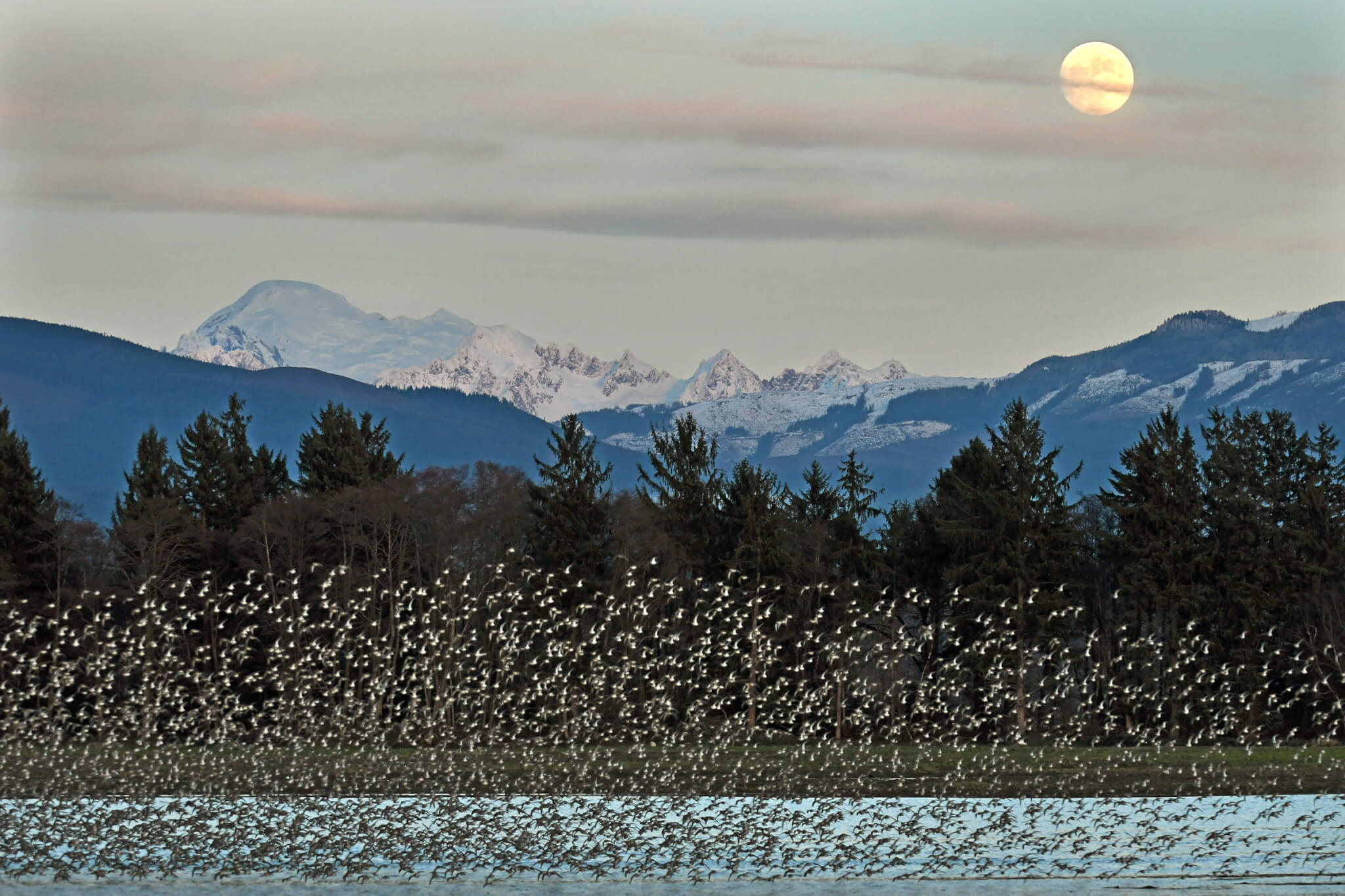
Skagit Valley Winter Birding
The Skagit Valley’s winter birding season begins around November with the return of migratory waterfowl and higher concentrations of raptors. The season’s showstoppers—tens of thousands of snow geese alongside thousands of trumpeter swans and tundra swans—typically stay through March. Several hundred bald eagles are commonly seen on the upper Skagit River around December with the winter salmon runs.
While any time of day can lead to a unique experience, bird numbers and activity tend to spike in the early morning and late evening. Many of these reserves are ADA-accessible.
Also See: Get to Know Washington’s Wildlife
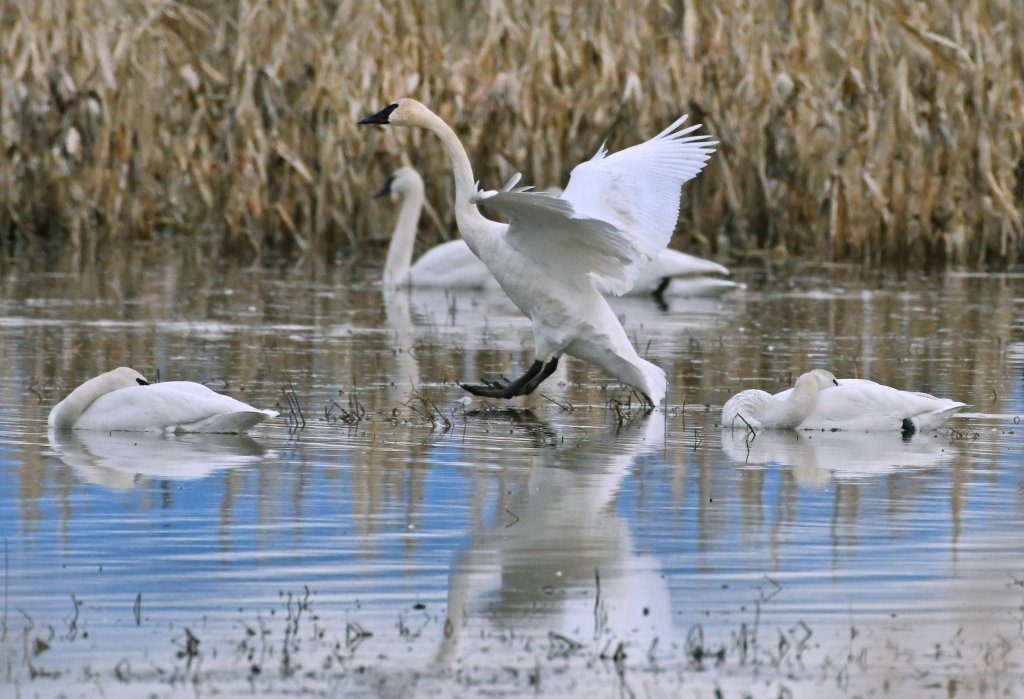
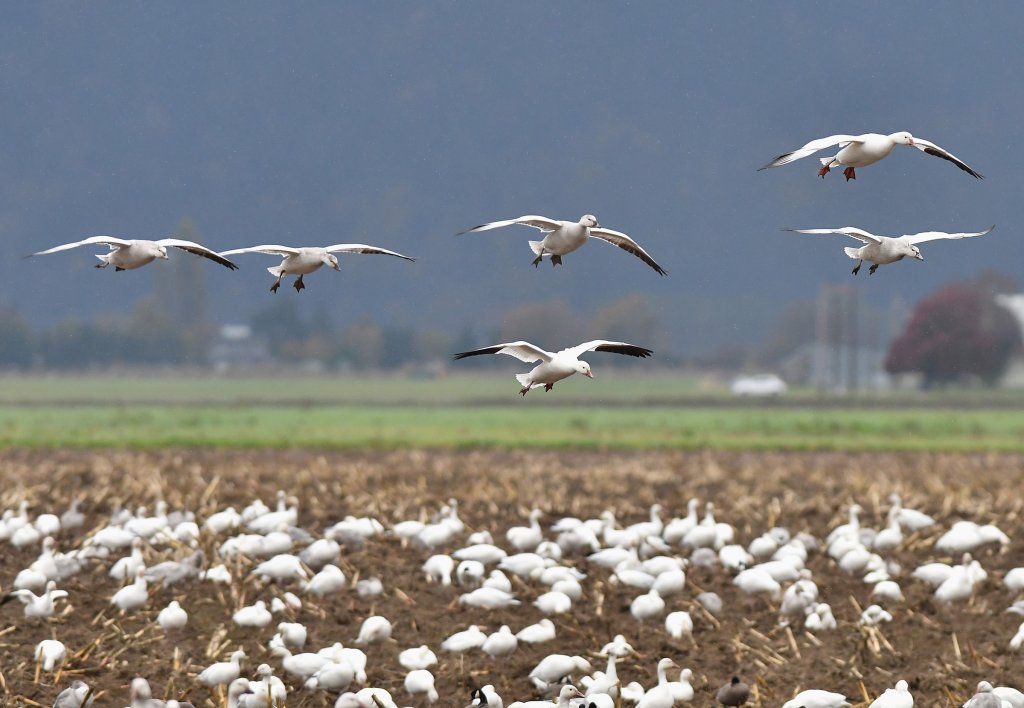
Skagit Wildlife Area – Fir Island Farm Reserve
Watch for: snow geese, tundra and trumpeter swans, northern harriers
This reserve boasts a high species count given its diverse environment. Tens of thousands of gregarious snow geese gather along the diked farmlands. When they spontaneously take flight, they ripple across the land in a sea of white and black. Even the most seasoned bird watcher can’t help but stare in awe. Tundra and trumpeter swans are regularly sighted alongside bald eagles and northern harriers. Paved and gravel trails lead to effortless birding.
Wiley Slough
Watch for: Ducks, swans, raptors
Located on Fir Island, Wiley Slough is a winter birding hotspot. The headquarters of the Skagit Wildlife Area is home to tidal marshes and forest supporting ducks, herons, swans, raptors, and more. A 1.3-mile loop trail with boardwalk sections offers easy winter wildlife viewing at multiple vantage points. Visit around low tide for increased feeding activity and excellent bird photography.
Samish Flats
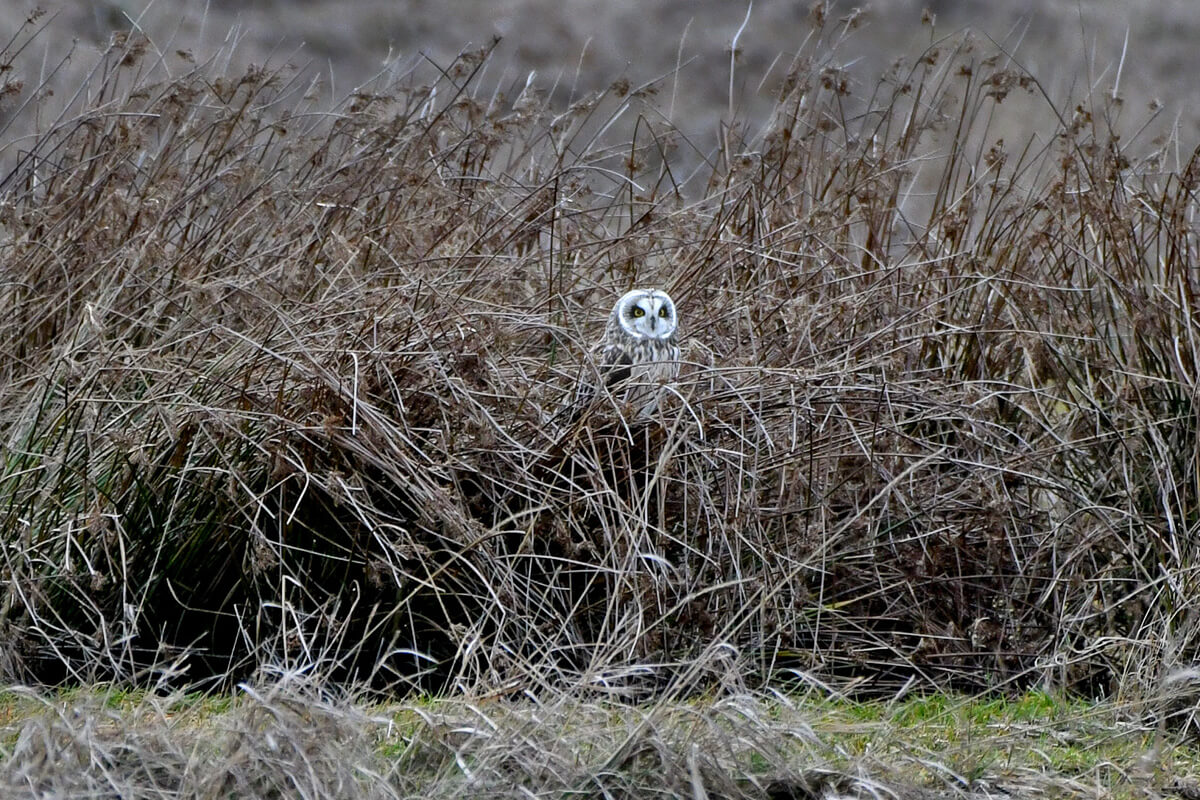
Watch for: Hawks, peregrine falcons, short-eared owls
Expansive farm fields and shoreline provide the perfect environment for winter birding in Washington. Keep your binoculars close as you search for red-tailed hawks, rough-legged haws, American kestrels, northern harriers, and peregrine falcons. Acrobatic short-eared owls hunt in the late afternoons, offering a rare opportunity to see owls in the daylight. Tip: Pack layers, as the exposed landscape can be cold and windy.
Butler Flats
Watch for: flocks of trumpeter and tundra swans
Some of the most memorable birding happens spontaneously while meandering along the region’s rural backgrounds. North of Burlington and near the Samish River, agriculture and wildlife marvelously coexist and thrive. Scores of formerly endangered trumpeter swans and closely related tundra swans flock among the farmlands carefully managed for their benefit. From the brink of extinction in the early 20th century, trumpeter swans have made a marvelous comeback thanks in part to hunting bans, habitat restoration and agricultural partnerships across the Pacific Northwest.
Upper Skagit River Eagle Watching
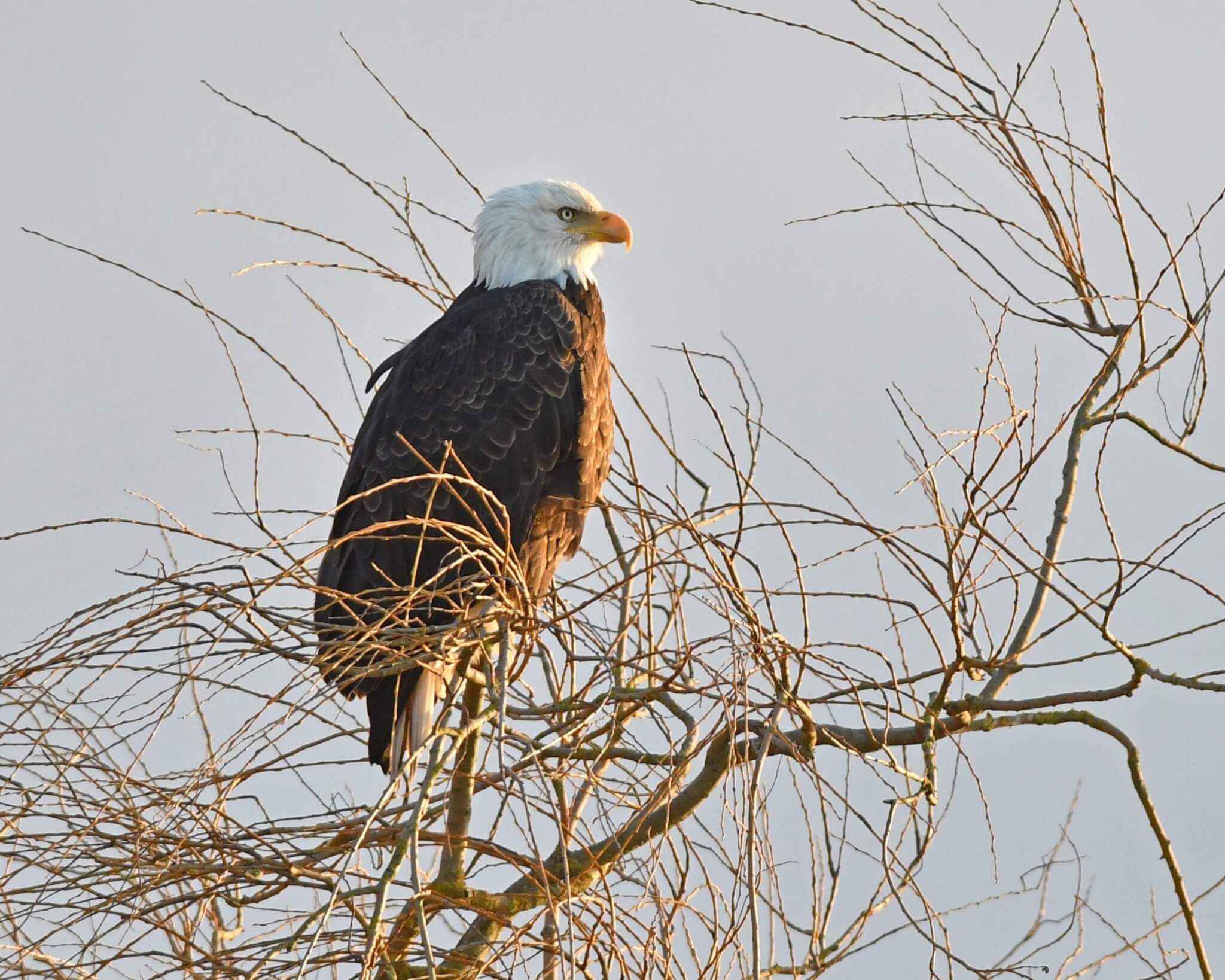
While eagles can be spotted throughout Skagit County, head east toward the North Cascades for prime viewing opportunities. Between the tiny towns of Marblemount, Rockport, and Concrete you’ll discover one of the highest concentrations of wintering bald eagles in the United States. They gather to feed on the annual salmon spawns along the Upper Skagit River and number in the hundreds between December and January.
While there are numerous spots for winter eagle watching, here are a few can’t be missed:
- Skagit River Bald Eagle Interpretive Center: Stop at this center in Rockport for an insider guide to winter birding. Friendly staff mark out the most up-to-date spots and offer guided walks with local naturalists.
- Marblemount Boat Launch and Fish Hatchery: Stop at the boat launch for an easy loop paralleling the confluence of the Cascade and Skagit rivers for prime eagle viewing. Staff at the nearby fish hatchery offer free tours discussing the intimate relationship between the beloved birds of prey and the salmon they feed upon.
- Raser State Park: Tucked away from the highway, Raser State Park offers a more secluded winter birdwatching experience. Migrating bald eagles along with goldeneyes, resident belted kingfishers, and woodpeckers are often spotted. This park has an ADA-accessible trail leading right to the riverbed.
For more resources about winter birding in the Skagit Valley, visit the Skagit Valley tourism website or birdsofwinter.org.
Winter Birding Beyond the Skagit Valley
Blaine and Birch Bay Birding
Not to be outdone by their southern neighbors, these small towns near the Canadian border are also Washington winter birding destinations. Birch Bay and Drayton Harbor are prominent destinations on the Aububon’s Great Washington State Birding Trail and are especially great for spotting waterfowl.
Head out in the early morning or evening to Marine Park and Jorgensen Pier to spot common and Barrow’s goldeneyes, harlequin ducks, dunlins, and grebes. Catch the unmistakable yodel of common loons as you immerse yourself in the sounds and sights of the sea. Birdwatching also abounds on the other side of the bay at Semiahmoo Park.
From the shoreline, expand your trip up the Mount Baker Scenic Highway along the Nooksack River. Bald eagles are drawn here between December and January, feeding on salmon with numbers rivaling that of the Skagit River. Drive to the end of the road for a glorious view of Mount Shuksan and Mount Baker.
The annual Wings Over Water Northwest Birding Festival in March is the perfect occasion for a more tailored trip. Take advantage of the event’s cruises of Boundary Bay and Semiahmoo Bay, where professional naturalists point out offshore species and take the guesswork out of bird watching.
Stanwood and Camano Island Birding
To the south, the charming town of Stanwood and neighboring Camano Island also offer stellar winter bird watching in Washington. The marshes, mudflats, and tidal channels of Port Susan Bay are home to the wintering ground for large flocks of shorebirds and waterfowl. The Nature Conservancy protects part of acreage in the over 4,000-acre Port Susan Bay Preserve, where you can enjoy a short one-mile walk along a dike trail through tidelands and farmlands to the Stillaguamish River.
In late February, Stanwood hosts the Snow Goose & Birding Festival at the Floyd Norgaard Cultural Center. Experience the annual winter gathering of trumpeter swans and snow geese on a tour, hear educational talks, enjoy local vendors and kids’ activities, and more.
About the Author
Quincy Koetz is a writer who loves mountaineering, kayaking, and long road trips through Washington State.
